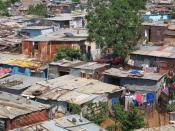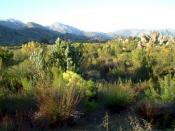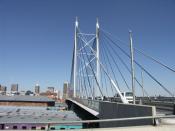South Africa South Africa is the southernmost part of the continent of Africa. It is one of the earth's oldest and stable landmasses. This is why there are no folded mountain ranges. The only mountain ranges that are similar to that kind of range, would be those in the southern tip. This is where the north-south ranges meet an east-west range in the Paarl area. The rest of the country has been slightly pitted so that interior lakes like the Okovango Delta have no outlet to the sea. Most of the country is at an elevation of 3,000 to 6,500 feet above sea level. South Africa lies north of 35 S latitude and is surrounded on three sides by the Indian and Atlantic oceans. Two large high-pressure areas control the weather in South Africa brought over by both of the oceans, in the winter a belt of depressions moves northward to bring rains to the south.
During the summer moist tropical air masses migrate southward, bringing frequent thunderstorms. There are not many rivers in South Africa, and those few are not navigable. The unpredictable rainfall makes drought in the areas a very common problem. The towns and cities cannot depend on a consistent source of water for the year. Water supplies for both the town and the country must be very well planned, so there is no drought. Wells are usually the source for irrigation and general water supply in the countryside, however the urban and industrialized areas need the use of dams. On the major rivers of South Africa it is easy to see many of the plus 360 dams that have been built. These are easily found on the Orange, Vaal, Limpopo, and the Tugela rivers. Many of the dams provide hydroelectric power to the national electricity grid.


